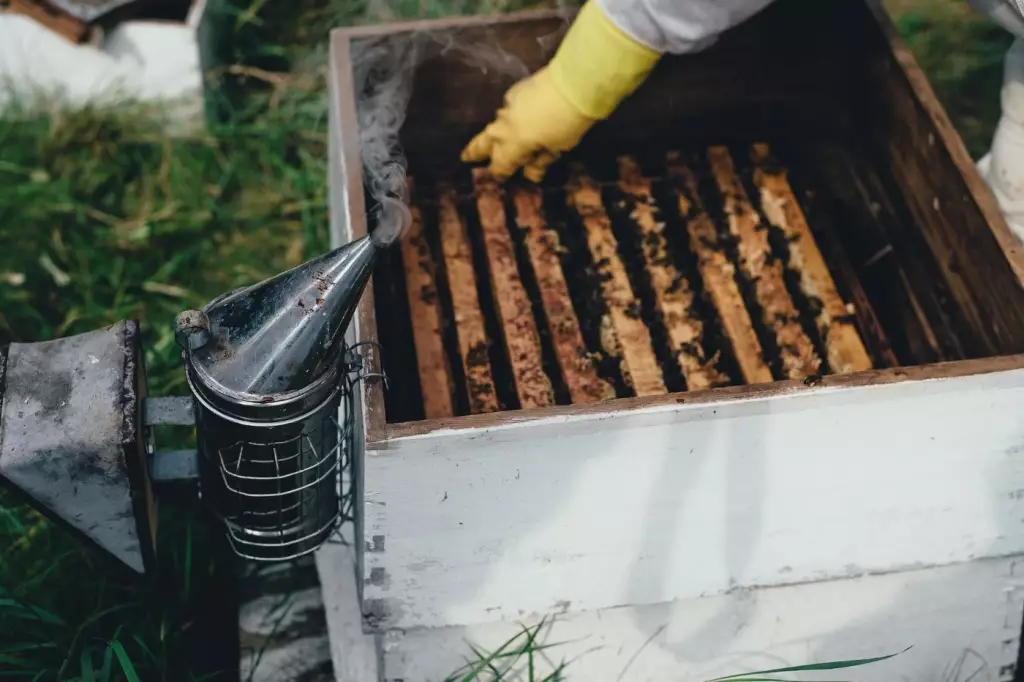How To Move Bees Without Killing Them
Moving from a place of comfort to a new, unknown place can be stressful for bees. When they undergo this change in the environment, some bees even die from the stress. In this article, we'll give you some tips on how to move bees without killing them.
To move bees away from your property without killing them, it's best to use smoke, spray citronella, or hang moth balls around the hive. To move an entire beehive, professional beekeepers ensure that bees will not be killed by properly sealing and strapping the hive boxes before transporting them.
Moving bees can either mean deterring them from their current location or completely relocating the whole hive itself. Either way, bees are very important pollinators, and we can help preserve their population by knowing more tips on how to move them efficiently without killing them.
Summary
- Moving bees away from your property without having to kill them will require only a few DIY tricks, such as sprays and smoke.
- Relocating a beehive without killing the bees inside it requires professional handling.
- Moving a beehive a short distance is as simple as suiting up, sealing in, and strapping the hive. But moving it over long distances will require vehicle aid.

On this page:
Removing Bees from Your Property Without Killing Them
There are no laws that protect bees from being killed. But to think that bees greatly contribute to pollination worldwide makes it morally wrong to kill or hurt them.
While it can be a nuisance and pose harm to humans when bees build hives on our property, there are ways to remove them from these locations and encourage them to find a new one. Below are some tips to remove bees without harming them using a few DIY tricks available at home:
Using smoke
Setting a small, smoky fire under the beehive can cause the bees to leave a certain location. This is because smoke signals bees to leave their hive as soon as possible, as if it is on fire.
When smoke reaches the bees, it signals them to consume plenty of honey to energize themselves in the search for a new hive. During this time, however, bees tend to eat a lot, causing them to be so engorged that they cannot sting anyone. This is why beekeepers use a smoker when checking their hives.
Spraying citronella
Citronella, although pleasant-smelling to humans, is highly repulsed by bees. Its smell won't kill bees, but it will be irritating enough to drive them away and relocate them. Citronella sticks and candles are often used, but sprays are convenient too, especially if sprayed near the hive.
Hanging mothballs
A less popularly known fact about mothballs is that while they can help repel moths, they can also repel bees. Although it falls short of studies regarding the negative impact of mothballs on bees, it has been tried and tested to work by many.
To make this effective, mothballs must be hung around the hive during the night when bees are less active; the closer to the hive, the better. Nighttime is best, as you will cause less disturbance to bees and assure your safety as well. After 5 days, rest assured that the bees have already moved away from your property.
Vinegar sprays
A solution of 50:50 water and vinegar is one of the novel mixture sprays that can be used to remove bees from your property. Spraying the hive with vinegar spray is best done at dusk and assures effectiveness in relocating and removing bees from an unwanted location.
Sprinkling cinnamon powder
To safely remove bees without harming or killing them, another good method is to sprinkle cinnamon powder around the hive for at least one week. The strong smell of cinnamon will surely cause bees to take flight and leave their newly built hive inside your property.
Relocating a Beehive Without Killing the Bees
Now that you know how to remove bees if they ever accidentally build a hive on your property without being harsh to them, the next thing to learn is how to relocate a beehive containing bees without killing the bees inside.

There are four pointers you need to remember when relocating a hive:
Understanding the bees
This means looking at the big picture of how things are laid out for the bees in their new location. Things such as how the bees will perceive their home, how their immediate environment feels to them, how they will recognize it, and how they will find their way back home even if they forage miles away from it are a few considerations to ponder.
Landmarks for bees
Bees have geospatial maps in their heads. They are quick to remember cues, and even if there are obstacles in front of them, they will know their way around. When you move a hive to a neighboring location, you'll see that bees will find their way back to the old location quickly because it is imprinted in their heads.
Timing is everything
The best time to move a hive is during evening or early morning since bees are inactive during this period. Most foragers are also back during this time or are not yet leaving until the sun is up.
Odor cues of bees
Using chemical cues such as pheromones is very common in bees. They have so-called "scent maps" that allow them to track their queen even in a crowded hive. So, if you leave traces of the smell of the old hive near the relocation site, bees will still follow that smell and go back to the old hive.
After knowing the above important pointers for relocating a hive, you should know that relocating a hive can either be a short distance, such as to the barn next to your original barn, or a long distance, which would require a vehicle.
Moving a Beehive in a Short Distance
A few days before the move, set up a brightly colored board at the entrance of the hive to familiarize the bees with it. Make sure this will be carried along with the hive when moving. This is going to be their cue to identify their home while they orient themselves in the new place.
Step 1: Seal the bees inside the hive.
The best time to seal them up inside the hive is during sunset or evening, so the foragers are all back inside. It is essential that when sealing the hive, you wear a bee suit.
You may use steel wool or mesh to temporarily block the entrance and secure it with tape or cloth staples. Also seal up other openings, such as the roof. It is best to inspect if the holes are sealed too and check the overall setup to see if the ventilation inside will be enough for the bees.
Step 2: Strap the hive.
Short-distance moves will only require one strap to keep all the parts of the hive together. Usually, wear and tear is unnoticeable, and not securing the hive when moving it may cause the baseboard and the brood box to fall off and separate.
Step 3: Start the move slowly.
Moving an entire beehive can be heavy, especially if the hive is well-established. For short-distance moves, two people are required to carry the hive, so it will be balanced and moved at a slow, steady pace.

Step 4: Help bees reorient.
Bees also need some time to adjust after you move them to a new location. To adjust them to the new setting, you can either move the hive a couple of yards every other day, put an obstacle at the entrance of the beehive like a tree branch to signal the geospatial map in the bee's head that that is a new place, or move the bees farther and move them back to the desired location after a few weeks.
Step 5: Remove hive stands and other equipment that came from the previous location.
As mentioned above, bees are dependent on odors. Removing things from their previous location detaches them from their smell and renders them incapable of going back.
Moving a Beehive in a Long Distance
Moving beehives in a long distance without killing them is the same as moving the bees in a short distance. You must suit up, seal in, and strap up. However, an additional step required would be getting a transport vehicle. A pick-up truck is a better option for moving established beehives to minimize the stress and confusion for the bees, as well as avoid dislodging the brood boxes and letting the bees out.



